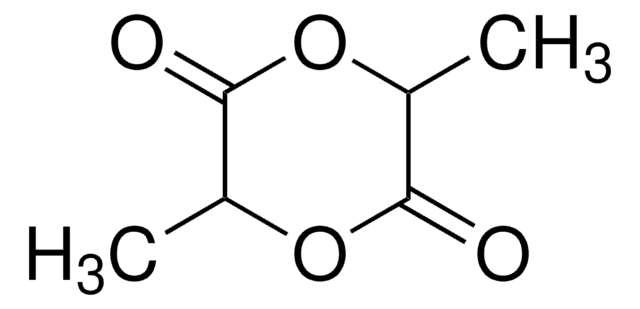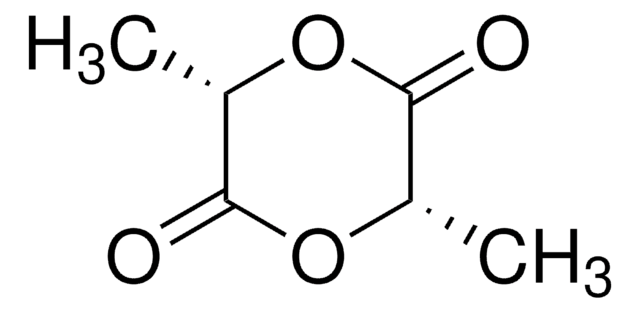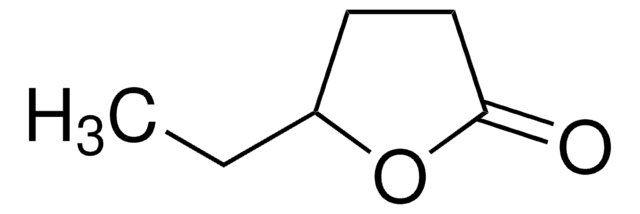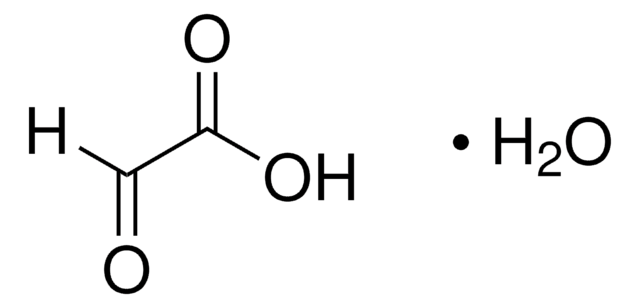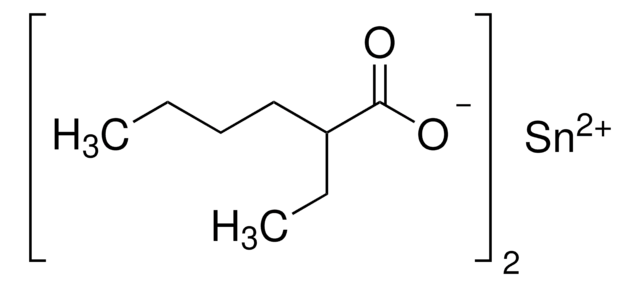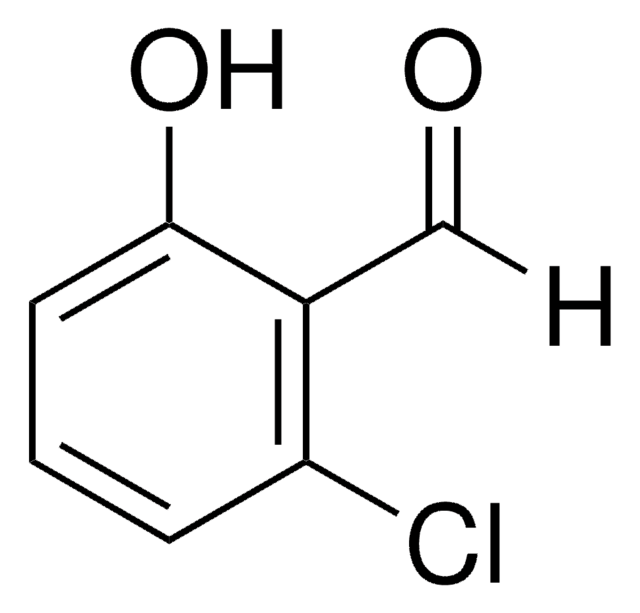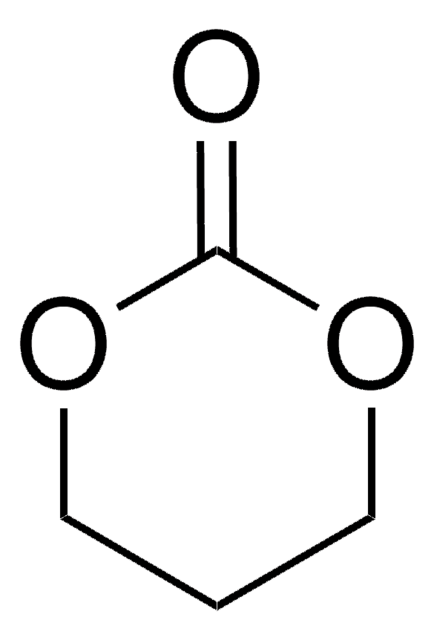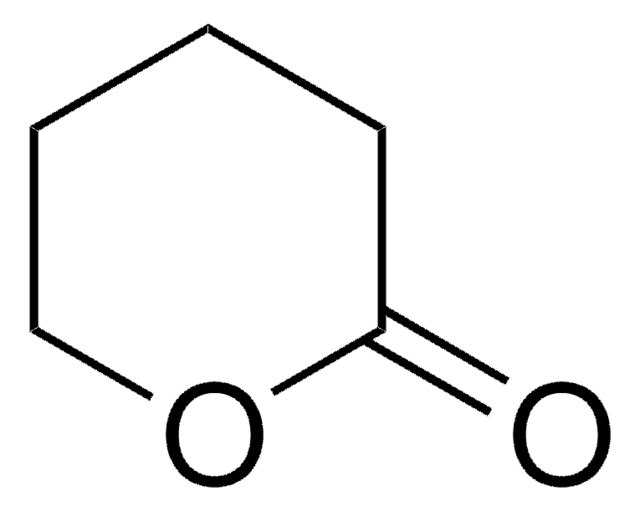All Photos(1)
About This Item
Empirical Formula (Hill Notation):
C4H4O4
CAS Number:
Molecular Weight:
116.07
EC Number:
MDL number:
UNSPSC Code:
12162002
PubChem Substance ID:
NACRES:
NA.23
Recommended Products
Quality Level
Assay
≥99%
mp
82-86 °C (lit.)
shipped in
dry ice
storage temp.
−20°C
SMILES string
O=C1COC(=O)CO1
InChI
1S/C4H4O4/c5-3-1-7-4(6)2-8-3/h1-2H2
InChI key
RKDVKSZUMVYZHH-UHFFFAOYSA-N
Looking for similar products? Visit Product Comparison Guide
Related Categories
General description
Glycolide is a cyclic dimer of α-hydroxy acid that can be used in the formation of aliphatic polyester. It is synthesized by the dimerization of glycolic acid. It forms a low toxic synthetic biodegradable polymer that can be used in medical applications. It is majorly used in the formation of a highly crystalline poly(glycolide) by ring opening polymerization.
Application
Glycolide can be used as a monomer in the preparation of poly(lactic-co-glycolide)(PGLA) via copolymerization with lactide monomer. PGLA is further used in the following applications:
- Porous PGLA microsphere scaffolds are used in bone repair applications.
- Encapsulated PGLA nanoparticles can be used in drug delivery and tissue engineering applications. Polymeric micro/nanoparticles made from PLGA have gained significant interest for their appealing characteristics, including biodegradability, biocompatibility, prolonged drug release, and safeguarding the drug against degradation.
Signal Word
Warning
Hazard Statements
Precautionary Statements
Hazard Classifications
Acute Tox. 4 Oral - Eye Irrit. 2
Storage Class Code
11 - Combustible Solids
WGK
WGK 3
Flash Point(F)
Not applicable
Flash Point(C)
Not applicable
Personal Protective Equipment
dust mask type N95 (US), Eyeshields, Gloves
Choose from one of the most recent versions:
Already Own This Product?
Find documentation for the products that you have recently purchased in the Document Library.
Customers Also Viewed
Towards electroactive gel artificial muscle structures
Electroactive Polymer Actuators and Devices (EAPAD) XX, 10594, 1059408-1059408 (2018)
Types of biodegradable polymers
Introduction of Bioplastic Engineering, 81-151 (2016)
J L Guo et al.
Science advances, 5(6), eaaw7396-eaaw7396 (2019-06-12)
Synthetic hydrogels are investigated extensively in tissue engineering for their tunable physicochemical properties but are bioinert and lack the tissue-specific cues to produce appropriate biological responses. To introduce tissue-specific biochemical cues to these hydrogels, we have developed a modular hydrogel
Zohreh Arabpour et al.
Journal of biomedical materials research. Part A, 107(10), 2340-2349 (2019-06-05)
Tissue engineering is one of the most promising areas for treatment of various ophthalmic diseases particularly for patients who suffer from limbal stem cell deficiency and this is due to the lack of existence of appropriate matrix for stem cell
Yutong Han et al.
Advanced science (Weinheim, Baden-Wurttemberg, Germany), 6(15), 1900251-1900251 (2019-08-14)
Due to specific immune recognition receptors on the surface of T cells, their membranes are promising mimic nanocarriers for delivering drugs to tumor lesions. However, this single targeting strategy potentially compromises therapy efficacy for tumor targeting due to inter- and
Our team of scientists has experience in all areas of research including Life Science, Material Science, Chemical Synthesis, Chromatography, Analytical and many others.
Contact Technical Service